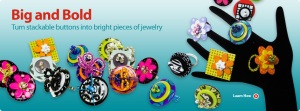I mentioned something about eventually talking about the outcomes project, yes?
[Since explaining the difference between outcomes and outputs is a whole post itself, I’m going to assume you are already familiar with the terms. Anyone that isn’t can find an easy explanation at this website.]
In deciding what kinds of questions to include on their surveys and focus group guides, the committee wanted to make sure that they were going back to the main goals of summer reading. First, to encourage kids to read over the break and maintain, rather than lose, the reading skills they had gained the previous school year. Secondly, to encourage more children and families to come to the library all throughout the year.
But how does one determine if the kids that are reading over the summer are doing so because of the library’s programs – or simply because they would be anyway? To help answer this question, the committee looked to recent research* about youth that showed that while a certain percentage of youth are, like most librarians, are solitary readers who will pretty much read no matter what, the great number of adolescent readers or social readers – what they read and how much they read is greatly influenced by either peer groups or other social interactions. So the questions they** fashioned are largely about reading as a social activity, the extent to which the library and the summer reading program fosters a sense of community.
I know a lot of people are worried that always being online will end up cutting into the amount of time people spend reading for pleasure. However, aside from the fact that being online often IS reading for pleasure, I think that social media can – and often already is – a great way to encourage reading among social readers.
It can be argued that part of the reason for Harry Potter, and especially Twilight’s popularity, is the ease at which youth can share what they are reading on the internet. Just as tweens and teens find friends and support and like-minded peers online where they may have difficulty finding it offline, fans of certain books can find communities online to help feed and foster their love of reading even if no one at their school is currently reading the same book. Just as online chat rooms for gay tweens helps foster confidence and consequently GSA’s across the nation, so do fan sites about various books and other media help the fandom grow offline.
Not everything about the internet is full of rainbows and lolcats, but I do think there is a lot of potential for using it to solve some of the problems we think that it’s causing.
*Howard, V. (2010). Teacher- peer influences on young teen readers an emerging taxonomy. Young Adult Library Services, 8(2), 34-41.
(I’m not sure if this is the same article we were given to read, but the article we read was clearly based on this research.)
**we? except that I came in on only the tail end; they had the foundation all figured out before I was asked to join, I only participated in the later discussions where we tweaked the language.
